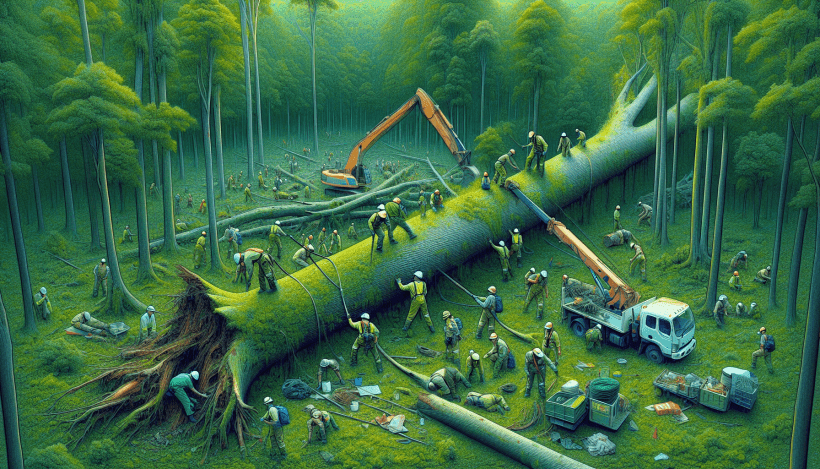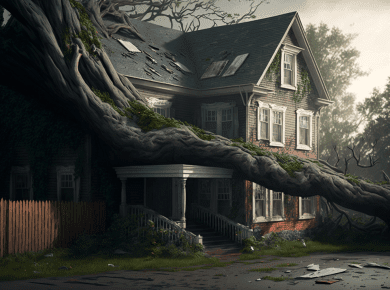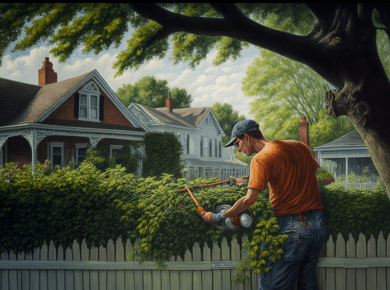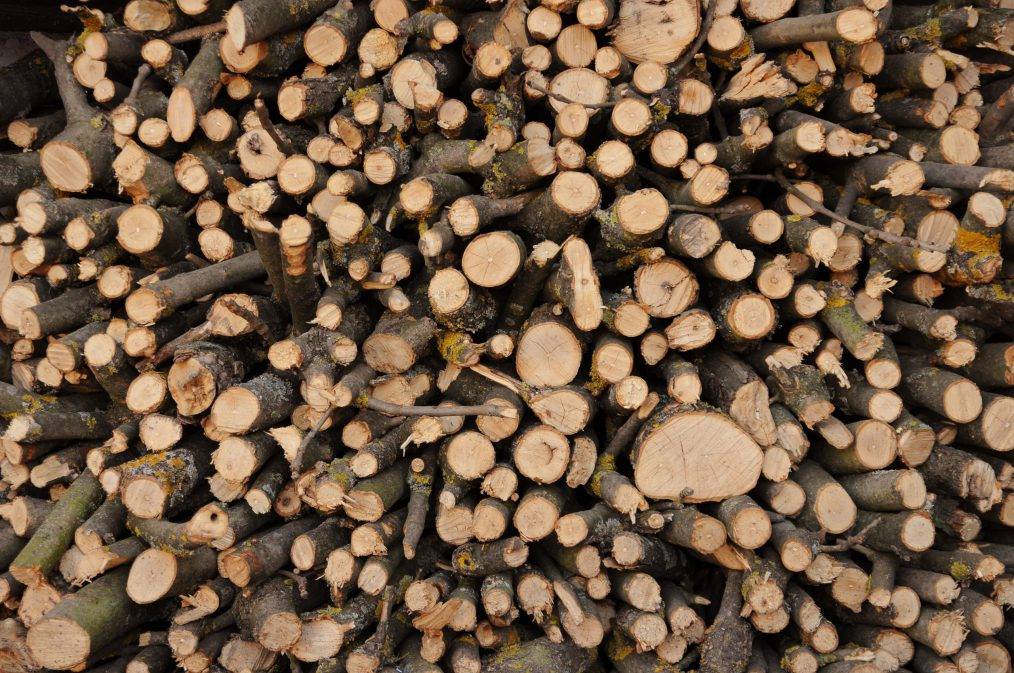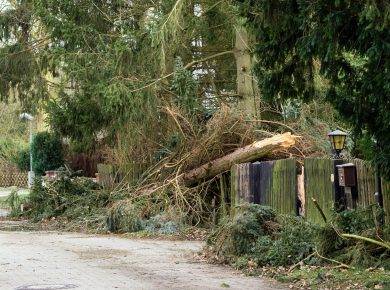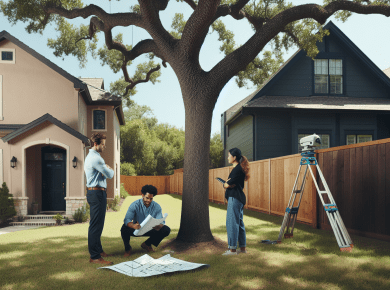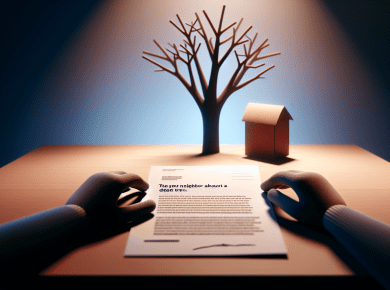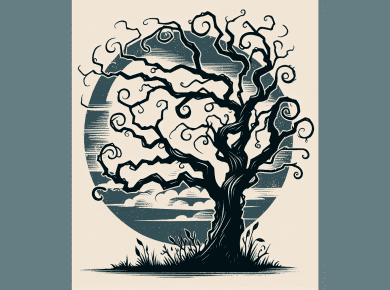Understanding Tree Disputes
Navigating the complexities of tree disputes can be challenging, especially when it involves neighbors and fallen trees. Understanding the dynamics of these disagreements is essential for finding effective resolutions.
Neighbor Disagreements
Tree disputes often arise between neighbors when a tree falls or branches encroach on property lines. When a neighbor’s tree falls onto one’s property, determining responsibility for removal may seem daunting. In most cases, the responsibility lies with the homeowner of the property where the tree’s trunk and roots are located. If the roots are entirely within the neighbor’s boundary, they are generally responsible for removal (Vintage Tree Care).
However, situations can become more complicated if the tree straddles the property line. A shared tree, with a trunk growing between both properties, requires coordinated efforts for removal, making the responsibility shared between both neighbors (Branch Out Tree Care).
| Scenario | Responsibility |
|---|---|
| Tree falls from neighbor’s property | Neighbor responsible (if roots are on their side) |
| Shared tree (trunk on property line) | Shared responsibility for removal |
Legal Responsibility
Understanding the legal aspects of fallen trees is crucial. Homeowners insurance typically does not cover preventative removal of trees that could potentially fall, such as those that are leaning or rotting. This cost falls solely on the property owner. Additionally, damages caused by trees that have fallen due to negligence in their removal may not be covered under insurance policies, which can lead to significant out-of-pocket expenses.
However, there are instances where insurance can cover damage and removal expenses. For example, if a tree or limb falls onto a home, garage, or other detached structures, or obstructs a driveway, insurance might assist with the costs up to the policy limit. It is important to note that the underlying cause of the tree’s fall plays a crucial role in determining coverage (Bankrate).
For neighbors looking to understand their rights and responsibilities concerning fallen trees, resources like who is responsible for cutting overhanging tree branches and neighbors tree fell on my house can provide valuable insights.
Homeowners Insurance Coverage
Understanding homeowners insurance coverage is crucial when addressing tree-related incidents. This section highlights two key aspects: storm damage coverage and negligence concerning tree removal.
Storm Damage Coverage
Homeowners insurance typically covers the costs associated with tree damage in specific situations. If a tree or a limb falls onto a home, detached structure, or blocks access to a driveway, the removal may be covered up to the policy limit. However, the cause of the tree’s fall plays a significant role in determining coverage. According to Bankrate, if the tree fell due to natural causes, the insurance coverage is more likely to apply.
| Scenario | Coverage Status |
|---|---|
| Tree falls on your home | Covered |
| Tree falls on detached structure (garage/shed) | Covered |
| Tree obstructs your driveway | Covered |
| Tree falls due to negligence | Not typically covered |
It is important for homeowners to familiarize themselves with their specific insurance policy and take proactive measures to ensure that their property remains protected from potential tree-related incidents.
Negligence and Removal
Negligence can significantly impact homeowners insurance coverage related to tree removal. Insurance typically does not cover the preventative removal of trees that are leaning, rotten, or otherwise dangerous, leaving costs to the property owner. If a tree is known to be hazardous and the owner fails to remove it, leading to damages, the costs incurred from damages or injuries may not be covered. This potentially results in out-of-pocket expenses for the homeowner, including legal costs.
If an insurer determines that a homeowner should have removed a tree but did not do so due to negligence, they may deny coverage for the associated damages. Therefore, it is essential for property owners to maintain their trees, identify any that are diseased or dangerous, and manage their tree maintenance accordingly.
Proper understanding of one’s insurance policy, coupled with appropriate tree maintenance, can help avoid pitfalls associated with fallen tree removal and neighbor disputes. For additional resources on managing tree-related issues, including what to do if a neighbor’s tree falls on your property, check our article on neighbors tree fell on my house.
Public vs. Private Tree Incidents
Navigating the complexities of fallen tree incidents can be challenging, especially when it comes to determining responsibility for these situations. This section focuses on fallen trees from public land and the related removal responsibilities.
Fallen Trees from Public Land
When a tree from public land, such as a park, falls onto a private property, the responsibility for removal typically falls on community officials. According to Vintage Tree Care, local municipalities are charged with managing the removal of these trees and covering all costs associated with their disposal. However, homeowners should be aware that their homeowner’s insurance policy may be necessary to cover damages to their property resulting from the fallen tree.
| Type of Tree Incident | Responsible Party | Notes |
|---|---|---|
| Tree from public land falls on property | Community officials | Homeowner insurance may cover property damage |
| Tree planted by the city falls on property | Community officials | Same as above |
| Dangerous public trees removed by the city | Community officials | Typically initiated if tree poses a risk |
Removal Responsibility
In general, the responsibility for fallen trees from public land lies with local government entities, which manage public trees based on their regulations. Cities often conduct removals if the trees are deemed hazardous to public safety or if they encroach upon private property. For residents in areas prone to extreme weather, disaster preparedness programs funded by taxes might offer additional support for removing problematic trees post-storm.
For trees that fall onto private roadways, the responsibility typically shifts to the property owner. It is advisable for homeowners to hire certified arborists to ensure the removal is handled safely and efficiently. For more information on the implications of neighbor disputes, see the article on who is responsible for cutting overhanging tree branches. Understanding these distinctions helps neighbors navigate disputes involving tree incidents, ensuring they are informed about their rights and obligations.
Hiring Professional Help
When faced with the dilemma of fallen tree removal, hiring professional help is often the most suitable option. Understanding who can assist in this matter can save time and reduce associated risks.
Certified Arborists
Certified arborists are trained professionals equipped with the knowledge and skills needed for safe tree assessment and removal. They undergo extensive training and certification processes, ensuring they meet the high standards required for safe practice. DIY removal is not recommended due to the complexity and risks involved Vintage Tree Care.
Homeowners should prioritize hiring certified arborists as they are knowledgeable about tree health, growth patterns, and the safest removal techniques. Before hiring, confirming the certification and the safety practices followed by the arborist is essential. Members of the Tree Care Industry Association (TCIA) are known to comply with safety standards, which is an added assurance for homeowners.
Having a professional manage the removal minimizes the risk of damage or injury, which can result from improper handling. Failure to hire a licensed professional could make individuals personally liable for damages or injuries that occur during the removal process Vintage Tree Care.
Risks and Liability
The risks associated with tree removal can be significant. Without the proper expertise, individuals may inadvertently cause damage to surrounding property, personal injury, or accidents. This includes risks from falling limbs, landslides, or even damage to nearby structures.
As mentioned, hiring an unlicensed individual could result in personal liability for damages caused during the tree removal Vintage Tree Care. Understanding the potential impacts of not choosing a certified professional underscores the importance of making informed decisions regarding tree care.
| Risk Type | Description |
|---|---|
| Damage to Property | Incorrect removal can damage fences, vehicles, or nearby structures. |
| Personal Injury | Improper techniques can lead to injuries for the person removing the tree or bystanders. |
| Legal Liability | Unlicensed individuals may face legal repercussions for damages or injuries. |
Homeowners can mitigate these risks by opting for professional services, ensuring the safety of their property and themselves. If a neighbor’s tree has fallen on personal property, understanding the legal aspects is vital; for more information, visit neighbors tree fell on my house for additional resources.
City Regulations and Assistance
Navigating the complexities of fallen tree disputes can be challenging. City regulations and local assistance programs play a crucial role in determining responsibility and providing support for residents facing tree-related issues.
Municipal Ordinances
Each city has specific regulations regarding tree maintenance and removal, especially for public trees. Cities often take action to remove public trees that pose a danger to residents or overhang onto private property. These rules can vary significantly depending on the local area. In many situations, if the city has planted the trees or maintains them through a local program, residents can request their removal or trimming at no cost.
If a resident identifies a dangerous overhanging tree on public land that touches or leans into their property, they should notify the city. Municipalities usually provide free trimming or removal in such cases to ensure public safety.
| Action | Responsibility | Potential Cost |
|---|---|---|
| Tree removal or trimming if hazardous | City (public trees) | Often free for residents |
| Notification of dangerous trees | Residents | N/A |
| Maintenance of privately owned trees | Homeowner | Varies |
To understand how these ordinances can affect personal situations, readers can also refer to our articles on who is responsible for fallen tree removal and neighbors tree fell on my house.
Disaster Preparedness Programs
Many cities implement disaster preparedness programs aimed at addressing issues related to extreme weather events. These programs are funded through local taxes and provide essential support, including assistance with the removal of hazardous trees following storms or severe weather incidents. Generally, these initiatives focus on public trees within the community (Angi).
Residents living in areas prone to severe weather should inquire about local disaster preparedness initiatives, as they may offer resources for managing tree hazards effectively. This proactive approach not only helps in maintaining safety but also promotes community resilience during disasters.
For further information on tree-related disputes, consider exploring our articles on tree on property line and can I throw neighbors tree branches back in their yard.
Removal Costs and Considerations
When facing the issue of fallen tree removal, understanding the costs and necessary equipment is essential. There are several factors that influence the overall expense of removal, and knowing about equipment and insurance considerations can help navigate financial responsibilities.
Cost Factors
The cost of removing a fallen tree can vary significantly based on several elements. Homeowners can expect to pay between $100 to $500 for simple tree removal. However, if the tree is larger than 80 feet, the budget should be increased to over $1,500, as this type of job may require specialized equipment such as cranes (Angi). Here’s a breakdown of factors affecting removal costs:
| Factor | Estimated Cost |
|---|---|
| Small Tree Removal (up to 30 ft) | $100 – $500 |
| Medium Tree Removal (30 ft – 80 ft) | $200 – $1,500 |
| Large Tree Removal (over 80 ft) | $1,500+ |
| Stump Removal | Additional $100 – $300 |
| Wood Chipping | Additional $50 – $150 |
For more precise estimates, specific details such as the height and trunk diameter must be considered. Large trees might incur costs of at least $15 per foot for removal, while smaller trees could cost approximately $8 per foot (Angi).
Equipment and Insurance
Before hiring a service for tree removal, it’s crucial to consider the equipment that will be used. Professional services often come equipped with chainsaws, stump grinders, and wood chippers to efficiently handle various tasks related to tree removal. The use of proper equipment ensures that the job is completed safely and effectively.
In terms of liability and costs associated with damage, homeowners should review their homeowners insurance policies. Many policies cover tree damage and removal under specific conditions. For instance, if a tree or limb falls onto a home or a detached structure, insurance may cover removal costs up to the policy limit (Bankrate). However, if a tree on one’s property causes damage to a neighbor’s home, the neighbor’s insurance typically covers the damage unless negligence in maintaining the tree can be proven (Bankrate).
Overall, neighbors need to communicate and assess responsibilities when dealing with fallen trees. Understanding the financial implications and insurance coverage can significantly aid in managing the situation effectively. For additional information on tree disputes, consider visiting our articles on fallen tree removal and who is responsible for cutting overhanging tree branches.
